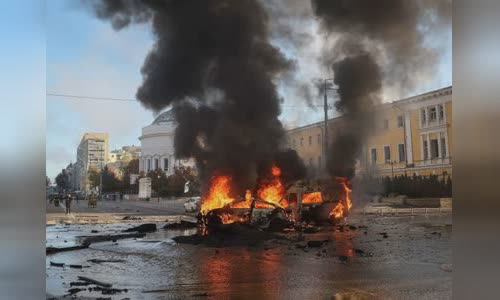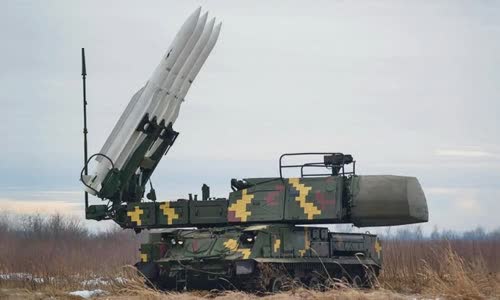Russia continuously ambushed Ukraine with long -range missiles to retaliate against the Crimea bridge, but could cause exhausted reserves, while Kiev increased air defense power.
The Russian military from October 10 has continuously conducted ambush cases targeting many Ukrainian cities and strategic infrastructure in response to the explosion of Crimea Bridge.

Photo: Reuters
Experts say that this move does not have to show a new military strategy, but the power showing the strength at the time when the Russian army was facing many difficulties, when struggling to prevent Ukraine's progress on the face on the domain.
This is the first time in the past half year Russia has conducted such long -range weapons raids, Jeff Haw, Russian military expert and advisor of New Lines Institute in the US.
However, Haw said that the ambush pose a number of issues for Moscow: their expensive cruise and ballistic missiles can only be implemented in batches, because this is a significant military investment.
Cars burned after Russian missile raid on Kiev on October 10.
On October 10, Russia launched more than 80 missiles into neighboring countries, of which more than 40 fruits were shot down by Kiev's air defense system, according to the Ukrainian army.
Ukrainian Defense Deputy Minister Hanna Maliar in late April announced that Russia had launched 1,300 missiles since the start of the campaign on February 24, estimated that Moscow has used nearly half of the rocket reserve in time.
The Russian defense industry is said to be able to produce 100-200 new missiles each year.
The economic sanctions that the West imposed with Russia made the country's weapons industry difficult to find electronic components supply.
In addition to the impact of sanctions, the Russian military industry is also influenced by the shortcomings in the management, this is somewhat revealed when the country executes the recent reserve soldier's encouragement,
Moscow has a large number of military equipment, but some cannot be used by the weakness of those responsible for preserving.
In recent months, complaints have appeared more.
Although Russia's early raids caused power outages in many Ukrainian cities, they did not stop Kiev's forces from continuing to counterattack.
Russia may face more challenges in the near future when pursuing rocket rain on Ukraine.

Photo: BQP Ukraine
Kiev for months has mobilized the United States and European countries to support additional weapons.
Ukrainian Defense Minister Oleksiy Reznikov on October 11 welcomed the appearance of the Iris-T medium air defense system that Germany transferred to Ukraine, considering this as a mark for the new era for Kiev's air defense.
Ukraine will have a Iris-T team of three launchers mounted on a truck carrying 24 missiles with a range of 40 km, controlled by a command vehicle 20 km away.
By deploying many teams, Ukraine can set up a defense line up to 100 km long, covering Russian main missile attacks.
Vehicles carrying bullets and launchers of Ukraine's Buk-M1 system.
A second system promised to transfer to Ukraine is Nasams.
An improved version can enhance the range of Nasams to more than 100 km.
The Russian drone provided by Iran has challenged Ukraine's air defense system.
Our air defense force has shown impressive interception ability.
In the current situation of the battlefield, Russia still has a greater advantage than Ukraine when possessing the second most powerful military force in the world.
The Ukrainian military will constantly strengthen the Western support, while Russia's attack capacity is likely to decline because it is difficult to maintain the frequency of large -scale ambushes for a long time, he said
The Ukrainian army did not choose to confront the Russian overwhelming fire, but tried to hit the weakest links to gradually change the battlefield.
The massive ambushes of many cities across Ukraine, President Putin seemed to want to strongly respond to criticism and panic.



 Janet Castillo
Janet Castillo







